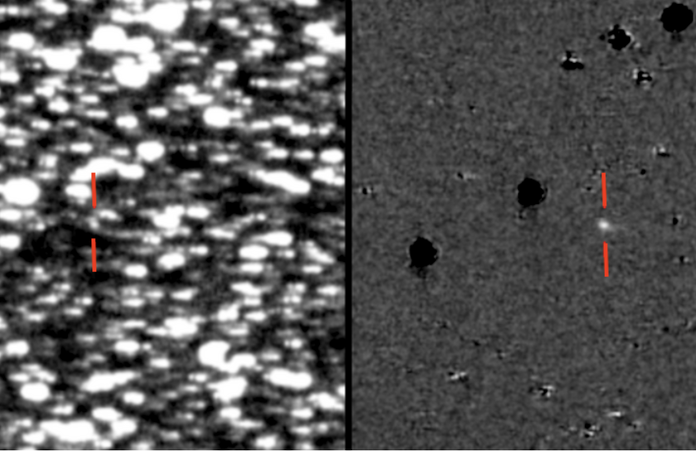ATLAS Telescope Discovers Brand New Kind of Asteroid

Astronomers just detected a new type of asteroid orbiting ahead of Jupiter—an asteroid with a comet’s tail.
Asteroids and comets both bear unique descriptions—asteroids are giant space rocks, while comets are chunks of ice with illustrious and gaseous tails. For the most part, they tend to follow those basic parameters closely, but recently astronomers have been spotting quite a few “crossovers.” Crossovers are astronomical objects that display both asteroid and comet characteristics, such as an asteroid developing a tail. Now, astronomers have just discovered a brand new type of crossover asteroid, known as a Jupiter Trojan.
2019 LD2
The newly discovered asteroid, called 2019 LD2, was spotted by a team of astronomers using the University of Hawai’i’s Asteroid Terrestrial-Impact Last Alert System (ATLAS). NASA's ATLAS telescope was initially intended to watch the night sky for any asteroids that may pose a threat to Earth, but it's proved helpful at finding and observing other less dangerous objects. 2019 LD2 was discovered by ATLAS back in June 2019 and has since been observed by multiple different astronomers and observatories.
By July 2019, ATLAS had captured more images of the asteroid showing its unique makeup—it had a tail made of gas or dust. Further observations in April 2020 (after the crossover asteroid cleared the Sun) confirmed the asteroid's tail. ATLAS has discovered over 40 different comets so far, all of which are interesting, but none of them are quite like 2019 LD2.

Jupiter Trojan
2019 LD2 is unique because of its where it’s orbiting—Jupiter. Jupiter has a few hundred thousand asteroids orbiting 60 degrees both ahead and behind it, called ‘Trojans.’ So far, none of the asteroids have a tail except 2019 LD2, which raises quite a few questions. The Jupiter Trojan asteroids are believed to have been captured in Jupiter’s orbit billions of years ago—its tail should’ve dissolved a long, long time ago.
Why does 2019 LD2 have comet characteristics? It may simply be a recent addition to Jupiter's long list of Trojans. It’s also possible that 2019 LD2 was recently impacted by another asteroid, revealing ice that was stored deep under its surface. “We have believed for decades that Trojan asteroids should have large amounts of ice beneath their surfaces, but never had any evidence until now. ATLAS has shown that the predictions of their icy nature may well be correct,” said Alan Fitzsimmons of the Queen’s University Belfast.
Now that we know of its existence, astronomers will be keeping a close eye on it. Further observations could reveal answers about its origins and unlock more mysteries about our solar system’s evolution.